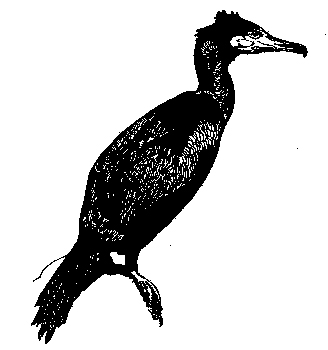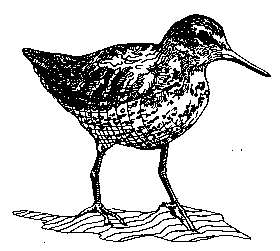|
| ||||||
Special | A | B | C | D | E | F | G | H | I | J | K | L | M | N | O
P | Q | R | S | T | U | V | W | X | Y | Z | ALL
R |
|---|
Red-breasted Merganser:
A}laaya{ - Mergus serrator A}laaya{ hanim saa aku{, hanim sangis malganangis ilagaan itxa{taa}utaza{. A}laayam hiiyukangis i}i}idal adukus, iga}iisi{ liidaa}utazas, kanuuya{ angali{takus, sam qas qa{tangis lakus mal hiiyukangis hiikus ngaan agu{izas. Uku}anaa aagayuu}im hiiyukaa hizax liidaaguzaza{. A}laayam ali}ii hakangis sas matazakungis mal sugdanaza{, kamgii chid}aayul hachii qaxchikda{ ama quhma{ aza{. Hiiyukaa ama kitakix uluudana{ liidaza{. A}laayam ayagagan hachii quuhmliigina{ liidaku{, kamgii chumnugim qaxchikdagan i}duxtana{ liidaa aku{, ilidaa quhmaza}, ama igasigan agalan utmaa aaka{ akiita{ hakangis quhmaza{. A}laayas udang al slum huzuu agzas. Hanim sangis matazakungis mal mayaa}sxanaa{s agungis i}atul ahmi}angis axsxaakaza}ulas. A}laayas qakuchas qa{tazakus mal una}al qalgal agudix qanuna{ liidazas. Saaqudgim aslaan udang isxa}il, saahmlas matazakus. Hanis asxuunulax tan}is uuquchiingi}i}ulangis kugan, kingtim sitxan asxuunulax ti}yum adugan ilan saahmIa}izas. Qamchiing asxuunulax hati{ aaka{ saahmla{tazas. Saahmlangis uluudam angalidigaa angali{tazas. A}laayam saahmlangis chiidatulakan agungis qalgazas.
Red-breasted Merganser - Mergus serrator The red-breasted merganser is a freshwater duck, but it is different from the other freshwater ducks. They have long thin orange bills that look like the edge of a saw blade. They feed on fish so their bills are well adapted for that purpose. The drake, like many of the other duck species, has very fancy feathers. Its head is green, and its back is black and white. Its bill and feet are reddish orange. The hen, on the other hand, has a kind of grayish body feathers. Its head is brown. Its belly side feathers are whitish. The middle part of its wings are white. The mergansers spend all year here, and like the other freshwater ducks, they are very difficult to hunt. This is because they can be spooked very easily. Because the merganser feeds on fish, it has a fishy taste when it is cooked. The mergansers nest here during the summer. They nest near the lakes on the islands without foxes. Their nests are usually found under a grassy bank, or in the long grasses. They lay from eight to ten eggs a year. The eggs are pinkish orange in color. They can be eaten if they have not been incubated for long. |
Red-faced Cormorant:
Ingatu{ - Phalacrocorax urile Ingatu{, aagayuu{ liidaaguzaku{ sagima}ii agacha uluudaza{, ama kahnuliisim quhmakix karmaanil}itana{ liidaza{. Slum aslaan hakangis angalingis chid}aayuna{ liidazas. Hagumatakus agiichigaan ala}um achidan igana}ingis ilan isxa}izas, asxuunulax hasam qayanaa{tangis kugan saahmla}izas. Aagayuu}im isxa{tanangis liidas isxa{tazas. Qankus asxuunulax siching saahmlam chid}igan angalidigangis saahmla{tazas. Kadim hadagaan taya}us ay{anangis asla qakungis alakan agudix, hasas kugan aagayuu}is asxuunulax ingatus sa}al agungis amgaax hadan huya{tal cha}iisal suzanas hiila{tazas. Sulal agudix ataqan quganam ngaan tukluxch{il aguun, agitaadat igach{izaku{ maasal, alaaza{siisal sulazaqangis hiila{tazas. Ingatus udaan ahmi}an slum aslaan aIanaza}ulas, qalgayaxsxazalakas maalal kalulgaza}ulas.
Red-faced Cormorant - Phalacrocorax urile The red-faced cormorant has a red face even though it is very similar to the Pelagic cormorant. It has two white spots toward the back of its sides. This makes the bird look like it's carrying white handkerchiefs in its pockets. During the summer, the red-faced cormorant's feathers look greenish. Sometimes they nest on cliffs which are their rookeries. Their nests are similar to the Pelagic cormorant. They lay three to four eggs. These are light blue in color. |
Red-throated Loon:
Qaqa}i{ - Gavia stellata Qaqa}i{ sam qigu{ liidaa aku{ qigu}im ilagaan chuqudaza{. Ala}um kugan aguun hamang kidu{tana{ liidaza{. Qan'gim aslaan hachigan hangadan hakangis quuhmliixs chuqagan ilagaan ilidaa akiita{ quhmaza{. Hingamataku{ qigu{ liidal hiiyukam chutxidigaa mataza{. Sam qigu{ liidaa aku{ mal, sam chlaqatuu amaza{. Hagumatal chla{tal qakuchas mayaa{tazakus mal chlaqatuzas. Sam chlaqatungis akus hakangis amnil hiila{tazas mal qaqa}i{ mataza{. Qigu{ liidam sa}anaa aku{ maalal, mayaa{talgal liisnaalaza}ula{, aadahliikaku{ hitmiitunazalaka{ mal. Ala}um kugan aku{ achunanaa{talakan aguun igaakaza}ula{. Aa}an qakuchas qal txin kayagnatiku{ mal. Qaqa}is slum aslaan hanim tan}ikuchangis kugan saahmla}izas. Slum aslaan hakaatxan inkam ilan iga{tanangis tutalgazas qa-qa-qa-qa, hi{tal iga{takus ilgalgahliguun hakang iga{takus uku}azas. Tunugan amil}an ilagaan aku{ asaa ngaan asaalaqa{ amasuku{, hingamaku} mal qaqa}i{ ngaan asa}azaku{. Red-throated Loon - Gavia stellata The red-throated loon is very similar to a common loon except it is smaller in size. When seen on water, it sits very low in it. During winter, the red-throated loon has gray feathers on its back and it has white feathers beneath its throat, all the way to its stomach. It has a very sharp bill like the common loon. The red-throated loon is a diver like the common loon. It dives for fish which it eats. It also has tight feathers, and it is very hard to pluck. Because of this, it is not hunted much. Sometimes the red-throated loon has a hard time trying to fly if there is no breeze. This is because it is heavy from eating fish. These birds nest on lakes where there are small islets. During the summers, these loons can be heard crying up in the sky while they fly. The sounds they make are qa-qa. It is possible to spot them first from the sounds they make. They probably got their name from the sound they make. |
Rock Ptarmigan:
A}diikas - Lagopus mutus A}diika{, tanam sakuchaa aku{ udaan ahmi}an huzugaan al sluzas. Sakucham qan'gim aslaan hakangis quhmal aku{ hitxigan alugan angakix qaxchikdaza{. Slum aslaan hachigan kugan hakangis zuulutu{ angaIi{tana{ liidal, kamigan alugan angakix qamikix uluudana{ liidaza{. Sas malganangis ilagaan itxa{taza{, kitakix huzuugizakix imli}ina{ liidazax. Hagumatakus hawakus aangsum kingdangis qa{tal an}a}izas. A}diika{ alax kimla{taza{, chuqagan sitxan kimla{ matanaam uglagaan kangchi{ ila{taa mataa}utaza{. Saaqudikinga ama qan'gim aslaan agiichigaan kalul qalgazakus. Qalgal agungis it{aygi{ qalganaa liidaaguzazas. Qan'gim aslaan hasinal txidix as iga{takus uku}azas, aqadagudix slum aslaan chisalal alax al haang aqalizakus, hagumatal saahmla}ii}dix agacha anuxtaqalizakus, qamchiing asxuunulax hati{ aaka{ saahmla{tazakus. A}diika{ igal ama tagal aguun tunuza{, mal agiichigaan uku}alakan aa}aku{ umang tutalgaza{. Sakucha{ akum tunuu qamdal chuqaa qaklagiikana{ liidaza{. A}diikam isxaa; sas isxangis agudigakus a}diikam isxaa mataza}ulax, qiigam adunaa{tangis ilan isxa}izas.
Rock Ptarmigan - Lagopus mutus The ptarmigan is a land bird which stays here all year round. It is white in color and the tail sides are black in winter. During the summer the ptarmigan is kind of golden on the sides. Its sides of its head are red and orange in color. The ptarmigan is different from other birds because its legs are covered with feathers. It feeds on berries. It has two stomachs. One is used for storing food, and the other is used for digestion and is called a gizzard. The ptarmigan is sometimes shot during the fall or winter for food. When it is eaten, it tastes something like reindeer. During the winter, the ptarmigan fly in by flocks, and when spring comes, they fly in pairs thinking of having eggs. They lay eight to ten eggs a year. The nest is a poorly lined hollow on the tundra. The ptarmigan cries when it takes off, and when it lands. So even when it is not seen, it can be heard landing or taking off by just its sound. For a small bird, it has a deep voice that sounds dry and brittle. |
Rock Sandpiper:
Chulixta{ - Calidris ptilocnemis Chulixta{, sakucha{ aku{ haang chugum kugan asxuunulax, quganas kungis uku}azas. Uku}al agungis hakangis quuhmliix angali{tana{ liidazas, iga{tal agungis igasingis quhmal ama qaxchikdakus uku}azas. Qan'gim aslaan hasinal txidix as iga{takus uku}azas, iga{tal agungis hingaanu{tal aqadagungis udaanu{tanas liida{ agu{tal iga{tazas. Chulixtas hawaa tanam ilan hunakucha{ agu{tal nagan isxa}izas. Siching saahmlam chid}aayugan angalidigagan tu{ila}ii aaka{ saahmla{tazas. Chulixtas liidas haang malgakus, itxa{taa}utazas, smii}is chulixtas liidanaa{takus aku}aan chulixtas ilagaan angunaa}utazas. Chulixtas slum huzuu udang azas. Slu{ masxal aguun tanam qudgan agacha saahmla}izas, tanam chi}il}i}ingis asxuunulax kii}uusis ilan saahmla}izas. Slum aslaan hakagan angalingis txidix isxanal chumnugim qaxchikdaa, quhma{ ama qaxchikda{ angali{tazas. Chulixta{ tunul aguun hmigala}na{ liida{ agu{taku{ tutalgaza{. Hagumataku{ slum aslaan isxagan ahmi}a axsxamasuguu tunul alquna{ liida{ agu{taza{.
Rock Sandpiper - Calidris ptilocnemis A rock sandpiper is a small bird usually seen on sand or rocks. When a sandpiper is seen it looks grayish in color. When in flight its wings are black and white. During the winter they fly in great flocks, when flying they seem to go side by side zig-zagging as they fly. There are other sandpipers that are similar to the rock sandpiper, but they are different. Among these are the smii}i{ which is larger than the rock sandpiper. They lay their eggs in a hollow on the mossy tundra. About four olive-buff spotted eggs are laid. The sandpipers are present all year round. During the summer, the sandpipers nest near swamps or on top of the high hills. They change color in the summer to brownish, black and white. When the sandpiper calls, it can be heard making whistling sounds. Sometimes during the summer, maybe when their nests are approached too closely, they fly around making all kinds of noise. |



 At{am Sangis
At{am Sangis